The proper horsepower for your pool pump depends on a number of factors. So before you jump on the bigger-is-better bandwagon, take a moment to get the facts. Let’s start with an unpopular and incredible statement: A typical size residential pool can be circulated effectively with a 1 HP pump. What?! Only 1 HP? Please accept my apology for the rude awakening that many pool builders and installers push unnecessarily over-sized pumps that are more expensive to buy as well as operate.
Pool owners often mistakenly believe if they choose a 2 HP pump over a 1 HP pump, they are getting double the performance. This is simply not true. In this scenario, you will get only about 15% more flow from the 2 HP model. But the amp draw of the larger pump will be significantly higher, raising your electric bill.
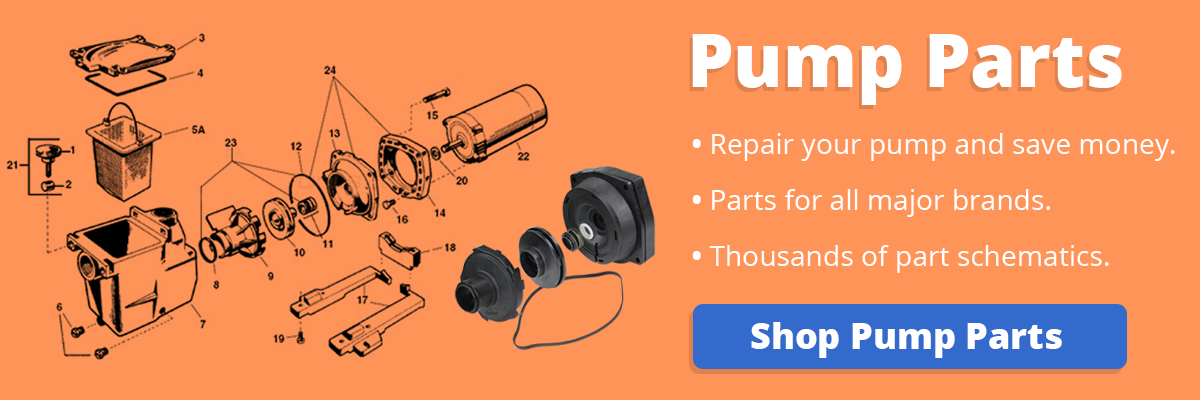
There are situations where a larger pump is certainly warranted. For instance, a pool with water features (deck jets, waterfall, etc) tied into the main pool pump might require a higher horsepower to provide enough flow. The same would hold true for installations with a spa or solar panels running off of the pool pump. Long runs of pipe might also require more power. If the pump in these scenarios is undersized, going up to a more powerful pump or installing a second pump dedicated to the water features or spa might be desirable.
Taking all of the above into consideration, here are some key things to keep in mind when increasing horsepower:
For New Construction
If you are building a new pool, you have the option to go with pretty much whatever horsepower pump you want as long as it meets the minimum requirements of your pool and is properly sized for the filter and plumbing. I can’t stress that last phrase enough – properly sized for the filter and plumbing. Should you decide a smaller pump is simply not macho enough for you, be sure your filter flow rate is higher than the pump output. Otherwise, you can end up damaging multiple pieces of equipment. Be consistent in your machismo and oversize everything.
For Pump Replacement
If you are replacing an existing pump and want to increase horsepower, you will have more to consider. First, your current filter size. Since pool filters have a maximum flow rate, your new pump cannot exceed the filter’s gallon per minute (gpm) rating. It is also advisable for the filter to be slightly oversized so for example if your filter has a 62 gpm flow rate and the higher horsepower pump will output 62 gpm, we’d recommend a smaller pump – or a larger filter. You don’t want to be operating right at the limit of the filter’s capacity.
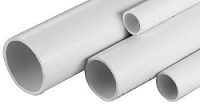 Second, plumbing lines also come into play. Many residential pools have 1.5″ plumbing while higher horsepower pumps (2 HP and up) typically have 2″ ports to accommodate larger pipes. You can use reducers to connect 1.5″ pipe to 2″ ports but this will restrict flow. Keep in mind also that since pipe size has a maximum flow rate, you might not gain any benefit from a larger pump while you will lose money on energy. Here are the most common pipe sizes with the correlating maximum flow rate:
Second, plumbing lines also come into play. Many residential pools have 1.5″ plumbing while higher horsepower pumps (2 HP and up) typically have 2″ ports to accommodate larger pipes. You can use reducers to connect 1.5″ pipe to 2″ ports but this will restrict flow. Keep in mind also that since pipe size has a maximum flow rate, you might not gain any benefit from a larger pump while you will lose money on energy. Here are the most common pipe sizes with the correlating maximum flow rate:
Pipe Size
1.5″ – 60 GPM
2″ – 100 GPM
2.5″ – 140 GPM
3″ – 225 GPM
Third, be sure to check your voltage. Higher horsepower pumps are mostly 230v only. If you only have 120v standard household current available at your equipment pad, you will not be able to power a larger pump.
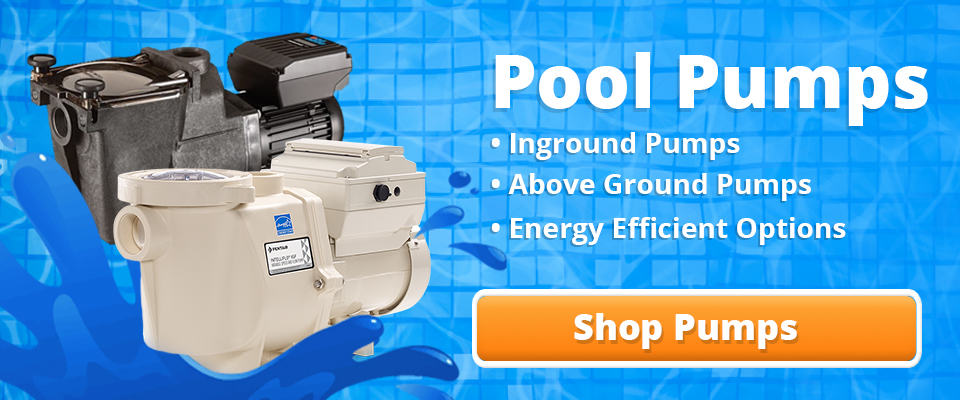
For Motor Replacement
Often a pool owner is replacing only the pump motor and sees this as an opportunity to upgrade to higher horsepower. In this case, you will need to consider the same filter and voltage limitations as above.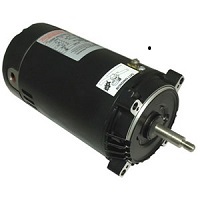
In addition, this will require the replacement of the impeller and possibly the diffuser. Both of these parts are rated by the horsepower they are designed to handle. The impeller definitely needs to be replaced whenever changing the pump horsepower, whether lower or higher. Diffusers typically cover a range of horsepower ratings. For example, when looking up the diffuser for your particular pump model, you might see one listed for .75 – 2 HP and then another for 2.5 – 3 HP. If the new motor falls within the range of your existing diffuser, you can reuse it.
An Example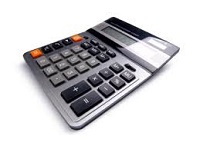
To get an idea of the actual savings between a 1 HP pump vs. a 2 HP pump, we will do a bit of math. An average 1 HP single speed pump draws 1.5 kWh while an average 2 HP draws 2.3 kWh. If we use a run time of 8 hours per day and the national average of .13 cents per kWh, our calculations look like this:
1 HP pump 1.5 kwh x 8 hrs = 12 kwh per day x .13 cents per kwh = $1.56 per day to operate
2 HP pump 2.3 kwh x 8 hrs = 18.4 kwh per day x .13 cents per kwh = $2.39 per day to operate
Extended over 365 days, that’s $569.40 per year for the 1 HP and $872.35 for the 2 HP (adjust accordingly if you don’t run your pump all year). Some regions have higher kWh rates so the savings will be more significant for some pool owners.

Undecided?
Some energy-saving options exist for those wavering back and forth between one horsepower and another. First, dual speed pumps have both low and high-speed settings. This type of pump is best for installations where you need higher flow only periodically. For example, you mainly use the pump for circulation but in the evening you turn on the waterfall for an hour while you’re relaxing by the pool. In a situation like this, you could get a higher horsepower dual speed pump or motor and still have the option to circulate at a lower speed. Most of the time, the pump would be running at a lower, more energy-efficient horsepower while you have the security of knowing you’ve got bigger guns if needed.
Variable speed pumps and motors offer the same as dual speed but with a programmable range of speeds instead of only high/low. This allows you to really fine-tune your pump operation to exactly the speed you need for each function (circulation, vacuuming, spa jets, etc.) Variable speed pumps and replacement motors will vary in horsepower range from one brand and model to another but the max is typically around 3 HP.
The Bottom Line
We simply recommend properly sizing your pump based on your specific needs. Ignore the pull of having greater power and just do some math (or let us do it for you). The numbers won’t lie and could end up saving you some significant money on both the cost of a pump and its operation.
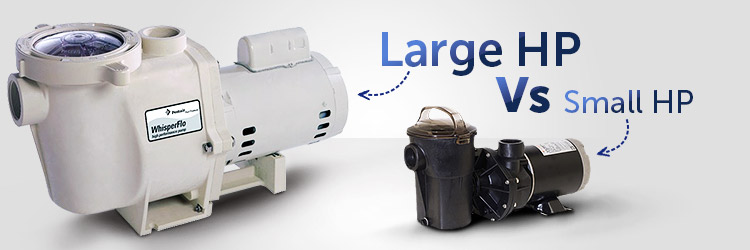
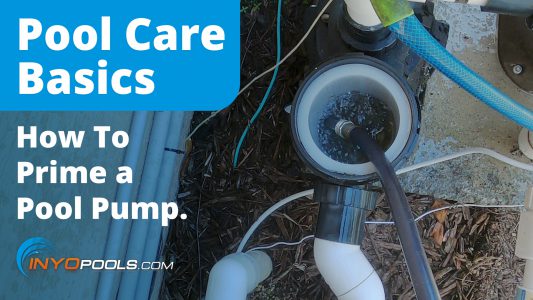
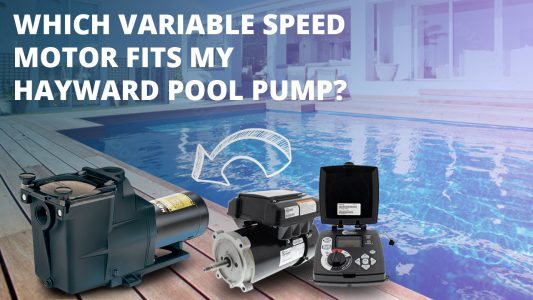
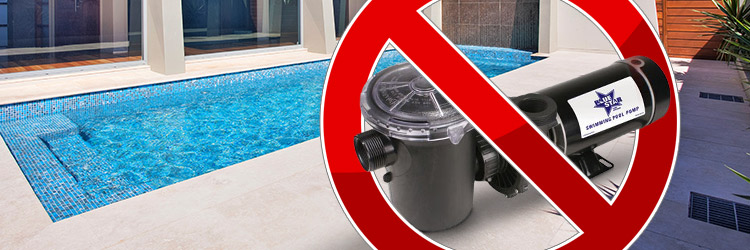
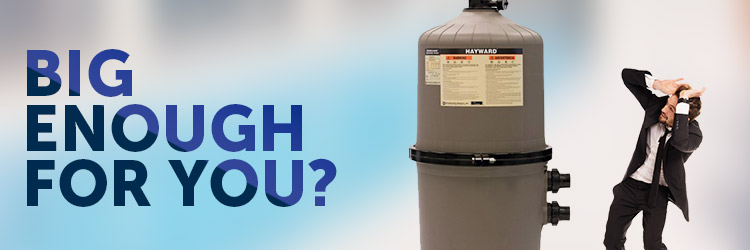






Impeller spec clarification – Challenger High Head pump circa 1998
In 10/2020, we had to replace the 22-year-old MagneTek Century Centurion (B843) 230v single speed 2 hp full-rated motor. The entire pump and motor lived the treacherous Texas life for those 22 years with no true maintenance and no replacement parts (and we did not pamper the equipment).
Based on the impeller (35-5315) I opted for a B2983 Century 2-speed 1.5/0.2 hp Full-Rate motor. The impeller was replaced as well as GOKIT5 installation. This new motor died after 2 year, 8 months.
I understand that motor and impeller (among other things) must be a match. However, I now wonder if the original installers had it right and the smaller motor was overtasked. We are replacing it with a 2 hp, 2-speed full-rated.
I am a bit leery of changing the 22-year-old formula, replacing the impeller, and killing another motor. However, I am certainly open to advice.
Thanks!
The original motor being a 2 HP full-rated could be a factor in it lasting longer than the 1.5 HP full-rated coupled with a 2.0 HP uprated impeller. But it could be the build quality of the motor. Unfortunately, “they don’t make’em like they used to” is true. The motors from 20-30 years ago were built to last longer. You can consider yourself lucky if you get five years out of a single or dual-speed motor manufactured today.
I currently have a Hayward 3/4 hp Super Pump, a Hayward s310s filter for a 20’x45′ (approx 38-40 gallon) pool. The pool was built in the 60’s has 2 return lines 1.5 each and one 1.5 recirculate/waste line, 1 main drain and no skimmers. Pool has not been used in a while. I opened it up about a month ago. It had previously had 4 to 5 gate vales, I removed several that were easy to get to and added a multiport system with pressure gauge. Gauge originally ran around 12 psi but recently dropped to 2.5 psi. After lots of backwashing, etc the psi is up to 5 range. Someone said pump is way undersized and should be 1.5 hp or larger What are you thoughts on proper size and what Hayward motor, impeller, etc should I replace the motor with?
It sounds like you did a lot of replumbing, which could be the main factor for the pressure loss. What do you mean by a multiport system? When I hear multiport, I think of the valve that mounts to the filter tank; but in this context, it seems like you are describing something different.
Also, If the 3/4 HP pump has been on there for years, it should still be viable unless you’ve added something that demands more from the pump.
i have a sand filter can i go from a 1 horse poiwer to a 2 horse power pump
As I mentioned in the article, it’s not that simple.
1. Is this an inground or above-ground pool?
2. What is the make and model of the pump you want to install?
3. What is the model number of the filter you have?
Just replaced 1 horse with 11/2 horse and pump won’t prime what should we do? Moter is what was replaced
Follow the instrutions in this guide: How To Determine Why a Pool Pump Won’t Prime
The larger motor is likely not the cause of the priming issues.
I need to change my 2005 pool pump it has 1.5 horse power for inground pool Hayward Jacuzzi, 40,000 liter or 10,550 gallons.
I can get a deal on a hayward Hayward SP2607X10 Super Pump 1-HP can i make the switch to lower horsepower and have same performance ?
Hayward Jacuzzi is not a model name of the pump; Hayward and Jacuzzi are two different manufacturers. Therefore, I would need to know the model of your current housing to know if the Super Pump can replace it.
I have an Hayward Super Pump 1.5HP.
I already replace the motor with a V-Green 1.65HP VS
Can I change the impeller to a 2 HP (currently is 1.5HP) and then reduce the speed of the pump to get an even quieter pump operation and longer motor lifetime ?
Will the 2HP impeller fit in my 1.5HP housing?
No, you can’t go to a 2 HP impeller because you only have a 1.65 HP VS motor. You could upgrade to a 2 HP impeller if you are willing to buy a new 2.7 HP V-Green Motor ECM27CU. The Hayward Super Pump Housing can fit all the impeller sizes n its model’s range.
Got a great deal on a 3 hp vs pump with 2″ connections. Replacing a 1.5 hp with 1.5 pipes and connections. Will be installing a waterfall and possibly a slide this summer. Should I be worried about the size of pipes an flow rate till other option are installed?
The more important fact to know is the size of your pool’s plumbing. If the lines are only 1.5″, you wouldn’t be able to use the new pump at top speed.
I currently have a 2HP Hayward super pump and I can’t seem to find a replacement 2HP pump. What can I do? Buy a 1.5hp?
Manufacturers have limited the single-speed pump selection available to online dealers. We mainly have 1 HP single speed or 1.5HP to 2.7 HP VS models.
Your best option is likely a 1.65HP VS like the PureLine Prime VS – Variable Speed Pool Pump 1.65 HP – PL2705
I have a wisperFlo pool pump (Pentair) Model WF-28. The pump is a 2 HP pump, service factor 1.1. I replaced the pump motor with an off brand motor (2 HP) and the motor needs replaced. I called Pentair to try and match up the WisperFlo WP-28 with a Pentair pump motor. The motor Pentair recommended is:
355024S. a 1.5 horsepower motor single phase, single speed, full rated, 56Y, 115 / 230
I was told by a “pool company” that I need a 2 HP motor. Can you help me out and answer why a 2 HP pump can work with a 1.5 motor? I have a small pool with 1 skimmer. Is this the motor that goes with this pump? What seals do I need?? Thanks so much
The WF-28 Whisperflo is a 2 HP uprated motor. The motor they suggested is the 1.5 HP full rated. Though these motors have different “listed HP,” their actual total HP is the same. In the chart below, you can see how the total HP of the two motors matches up. Total HP = Listed HP x Service Factor
Is it ok to replace a pump that has 2 inch in/out pipes with one that has 1-1/2 inch in/out pipes.
The new pump is 1.5hp variable speed, the old one is 1hp 1 speed.
That should be fine. Also, keep in mind that it is a variable speed so you can curtail the RPMs to fit almost any situation. You should be good to go with the 1.5 HP VS.
I am so confused. Hopefully you can help! We had a 1.5hp pump and upgraded to a 1.65 VS. We still do not have enough water movement. We have a vacuum valve, a drain valve, and a skimmer valve. 3 skimmers in the pool, 3 return jets. We have water to a slide as well. 2″piping. To run the vacuum I have to keep everything else closed and run the pump on the highest rpm (3450). To get the skimmers to at least somewhat do their jobs I need drain and vacuum valves closed, and again, pump on full speed. We’ve jad other pools and I can’t say I’ve had this issue. The pool is 20k gal too. Should we move up to a 3 hp?
My current pump is a 3/4″ Hayward motor, 23,000 gal pool any problem using a 1 HP. Will see much difference in electricity?
With the HP you have now, was it working well before the motor died? The pump can be upgraded but you would need to get the motor, and at least an impeller; some pump models made need you to change more parts. But with that increased flow rate, you may introduce pressure issues to an otherwise healthy system.
With regard to power consumption, you can compare the amp draw of the two motors to determine the increase in operational costs. A portion pof those operational costs can be offset by running a shorter schedule, which is possible with the larger pump.
Hello thank you so much for all of the information. I was going to plumb my three-quarter horsepower Pentair whisper flow with 2” through a diverter to move the water through solar heater tubing, but it’s 1/2 inch, will there be issues With reducing that much?, it’s about 300 feet of piping. The pump is not a variable speed. Thanks in advance, Terry B.
Hello thank you so much for all of the information. I was going to plumb my three-quarter horsepower Pentair whisper flow with 2” through a diverter to move the water through solar heater tubing, but it’s 1/2 inch, will there be issues With reducing that much?, it’s about 300 feet of piping. The pump is not a variable speed. Thanks in advance, Terry B.
I have 1.25 HP pomp and I just replaced it with 1.5 HP . Is this move OK ??
That would depend on the factors mentioned in the article. Can you provide some background on the situation?